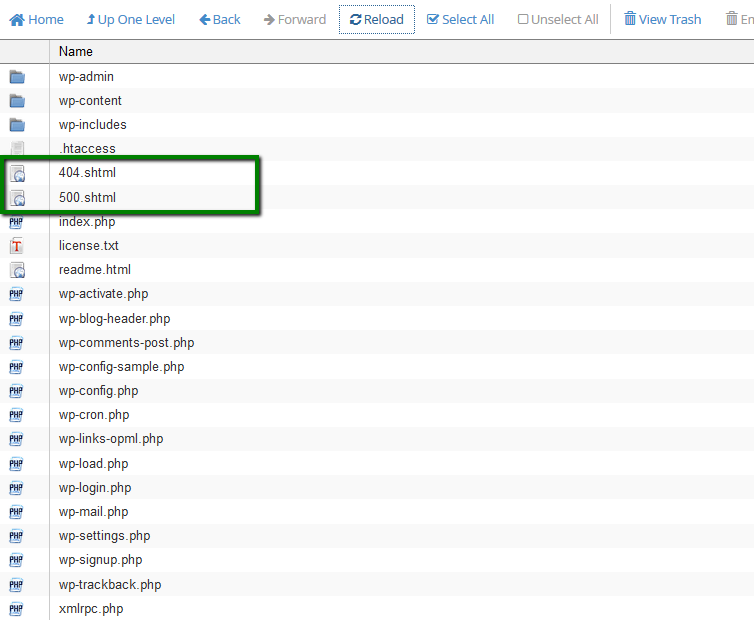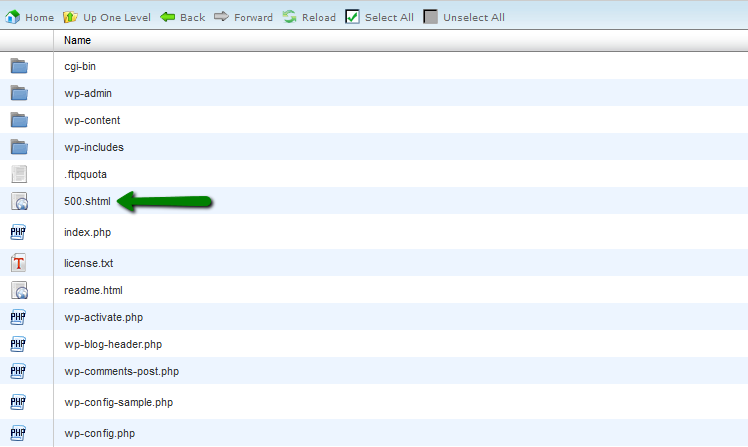Error internet pages are displayed when a person enters a improper/outdated URL or when a single is not approved to accessibility a unique listing of your world wide web house. cPanel makes it possible for you to customise the default perspective and change the way the mistake is displayed:

for cPanel paper_lantern concept
for cPanel x3 theme
for cPanel paper_lantern concept:
1. Log into your cPanel.
2. Navigate to Innovative segment > Error Web pages menu:



3. Pick out the area identify in from Managing fall-down menu and click on the error you wish to improve:



If you can’t locate the wanted error code in Edit Widespread Mistake Codes tab, swap to Clearly show All HTTP Mistake Position Codes:


4. After the mistake code is picked, you will be taken to HTML editor that delivers the adhering to tags:



Requested URL: displays the intended URL the customer is hoping to check out.

Server identify: shows the web site’s server title.

Visitor’s browser: shows the visitor’s browser style such as Web Explorer, FireFox, Netscape, etc.

Redirect Position Code: shows the style of code in the 300-307 variety, to find out far more adhere to this backlink.

 

Make confident that you Save the variations.

5. After that the .shtml file will be placed to the root listing of your internet site:


6. In buy to connect .shtml to your internet site, you will need to increase the corresponding rule to .htaccess file.

If you are not able to identify .htaccess, help Show Hidden files (dotfiles) solution in Options menu:

If there is still no .htaccess file in your File manager, come to feel free of charge to generate a new 1 working with File choice:


7. Soon after that appropriate-click on the file and use Edit choice:


Include the pursuing rule:

ErrorDocument 500 /500.shtml
Note, that mistake code and file identify must be adjusted accordingly. For case in point, if you want to join 404.shtml, the rule need to search like:

ErrorDocument 404 /404.html
for cPanel x3 theme:
1. Log into your cPanel.
2. Navigate to Advanced area > Mistake Internet pages menu:



3. Choose the domain title in from Managing fall-down menu and click on the error you want to modify:



If you simply cannot discover the essential mistake code in Edit Typical Mistake Codes tab, switch to Exhibit All HTTP Error Standing Codes:


4. After the mistake code is selected, you will be taken to HTML editor that presents the adhering to tags:



Do not overlook to Help save the adjustments.

5. Right after that the .shtml file will be positioned to the root directory of your web-site. 

Transfer to File Manager menu in cPanel, choose Document root for possibility and your domain from the fall-down menu. Make guaranteed that Exhibit Concealed Documents (dotfiles) is enabled:



6. In get to hook up .shtml to your web-site, you need to have to incorporate the corresponding rule to .htaccess file.

If you can not locate .htaccess file in your internet site root directory, feel absolutely free to make a new just one employing New File choice:


7. Immediately after that appropriate-click on the file and use Edit solution:


Add the next rule:

ErrorDocument 500 /500.shtml
Take note, that error code and file identify should be adjusted accordingly. For case in point, if you want to hook up 404.shtml, the rule should seem like:

ErrorDocument 404 /404.html
Which is it!
Have to have any help? Contact our HelpDesk




Recent Comments